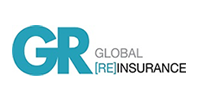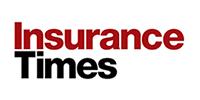Earlier this year, the Lloyd’s Market Association (LMA) conducted a survey of heads of exposure management to gauge industry readiness for new technologies.

Sanjiv Sharma, head of actuarial and exposure management at the Lloyd’s Market Association (LMA), is at the forefront of London market discussions about the future direction of exposure management.
When asked about the evolving nature of exposure management, Sharma (pictured) explains that the job has become significantly more technical, with some major consequences for skills in demand.
“Exposure management has always been technical, but now we’re moving towards something more advanced,” Sharma says.
The introduction of next-generation risk models, artificial intelligence (AI), and new coding technologies are together making a profound impact on the way exposure managers operate, he explains.
The LMA conducted a survey earlier this year among Lloyd’s market heads of exposure management to gauge the industry’s readiness for these new technologies.
“About two-thirds of respondents indicated they are planning to adopt next-generation catastrophe models within the next 18 months,” Sharma shares.
This shift will require professionals to upskill, particularly in areas such as coding.
“Demand for non-natural catastrophe expertise is also increasing, and the competition for talent in these areas is fierce,” he notes.
Sharma sees this transition not just as a technological upgrade but to make exposure management more calibrated and structured.
“It’s not just about the market cycle. It’s about pushing forward with advanced technology to improve the understanding of risk aggregation,” he says.
Cyber risk focus
Cyber insurance business continues to play a prominent part of discussions within exposure management, Sharma explains.
The LMA’s “Practical Management of Cyber Exposures and Aggregations” report focuses on data quality, governance, and the evolution of exposure management frameworks in the context of cyber.
“The report highlights key challenges, including the need for structured frameworks and the importance of upskilling exposure management teams,” Sharma adds.
This topic of cyber risk is of particular importance in a world where digital threats continue to evolve.
The LMA’s cyber underwriting panels are heavily involved in developing best practices, Sharma points out.
These panels are helping shape the future of exposure management for the cyber sector, ensuring technical and strategic insights are considered.
For Sharma, collaboration is key, especially when navigating complex exposures like cyber and casualty risks.
“We ensure that there is a good level of cohesion between exposure management and underwriting teams,” he says.
Navigating casualty
Casualty risk, particularly in the context of social and economic inflation, is another area within re/insurers’ books receiving increased attention.
Sharma describes how the exposure management working group (EMWG) at the LMA has been actively engaging with the market to improve casualty data standards and develop frameworks for better management.
“The pain points facing exposure management and underwriting teams in casualty are being addressed through cross-group working parties,” he says.
“Casualty has been a focus for some time now, and we look to develop recommendations for improving data standards, definitions, and frameworks for scenarios,” he adds.
The approach is designed to make casualty exposure management increasingly robust and aligned with market needs.
Speaking more generally about the performance of the casualty segment, which includes cyber in Lloyd’s results, he notes that while the segment has reported profitably in recent years, the projection of casualty performance remains an area of focus for syndicates,
Themes of social inflation, the potential for nuclear verdicts and emerging risks are front of mind for actuaries, exposure management professionals and underwriters, he emphasises, citing the LMA’s Lloyd’s 2025 Insights Report.
Looking ahead
Sharma is keen to explore the role of emerging technologies in exposure management, recognising that professionals will need to evolve alongside technological advancements.
The year ahead promises further developments in both the technological and strategic dimensions of exposure management.
As Sharma works closely with his colleagues to tackle the most pressing issues, the future of exposure management appears to be one of collaboration, technological innovation, and continuous learning.
“With the growing importance of data quality and the complexity of cyber and casualty risks, exposure management teams will need to become more tech-savvy and adaptable,” he adds.










No comments yet